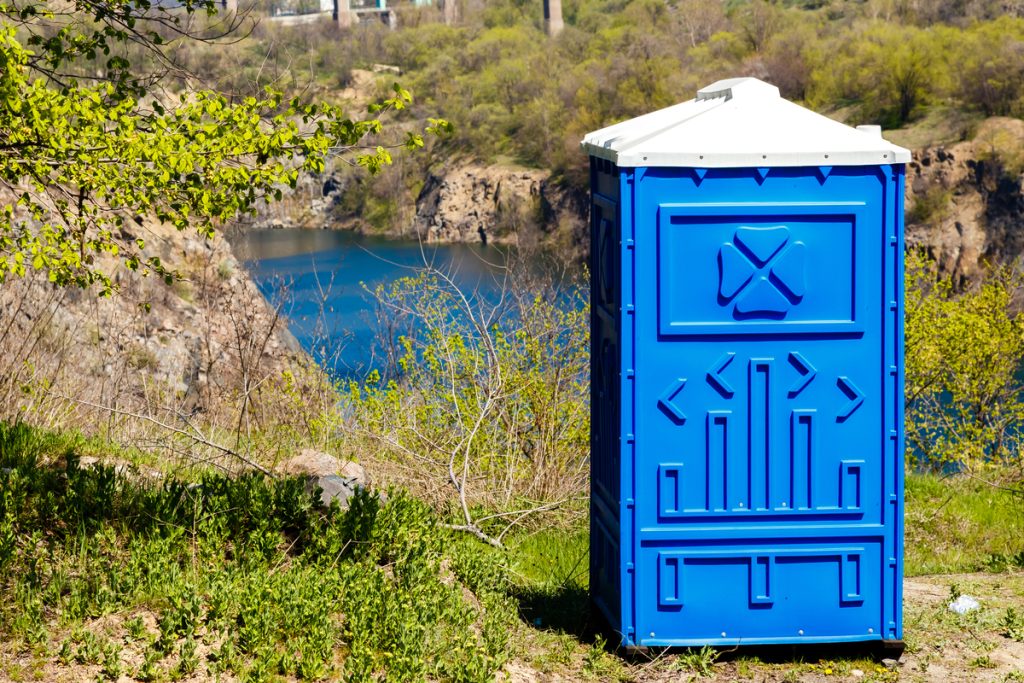Portable restrooms have become an essential component for a wide range of events and situations, from outdoor festivals to construction sites. One of the primary concerns associated with portable restrooms is managing and controlling odors, which can significantly impact user experience and overall satisfaction. Understanding the science behind odor control in portable restrooms is crucial for maintaining a pleasant environment and ensuring effective sanitation. This article delves into the mechanisms and technologies used to manage odors in portable restrooms and offers insights into best practices for odor control.
Understanding Odor Formation in Portable Restrooms
1. The Chemistry of Odors
Waste Decomposition
The primary source of odors in portable restrooms is the decomposition of organic waste. As waste breaks down, bacteria and other microorganisms produce gases such as hydrogen sulfide, ammonia, and methane. These gases are responsible for the unpleasant smells commonly associated with portable restrooms.
Chemical Reactions
The decomposition process involves several chemical reactions. For example, the breakdown of urea in urine produces ammonia, which has a strong and distinct odor. Similarly, sulfur-containing compounds in feces produce hydrogen sulfide, another odoriferous gas.
2. Environmental Factors
Temperature and Humidity
Temperature and humidity play a significant role in odor formation. Higher temperatures accelerate the decomposition process, leading to increased production of odor-causing gases. High humidity levels can also contribute to odor problems by creating a more conducive environment for bacterial growth.
Ventilation
Proper ventilation is crucial for controlling odors. Without adequate airflow, gases can accumulate and intensify unpleasant smells. Good ventilation helps disperse these gases and prevent their buildup within the portable restroom.
Techniques and Technologies for Odor Control
1. Chemical Odor Neutralizers
Deodorizing Agents
Chemical deodorizing agents are commonly used to neutralize odors in portable restrooms. These agents work by chemically reacting with odor-causing compounds to neutralize their smell. Common deodorizing agents include chlorine dioxide, ozone, and enzymes.
Enzyme-Based Products
Enzyme-based deodorizers use natural enzymes to break down organic matter, reducing the production of odor-causing gases. These products are effective in treating waste and preventing unpleasant smells.
2. Air Fresheners
Fragrance-Based Solutions
Air fresheners release pleasant fragrances to mask unpleasant odors. These products can be used in conjunction with other odor control methods to improve the overall scent of the portable restroom.
Continuous Release Systems
Continuous release air fresheners are designed to provide a steady stream of fragrance over time. These systems can be installed in portable restrooms to ensure a consistent and pleasant odor throughout the event.
3. Advanced Ventilation Systems
Fan-Based Ventilation
Modern portable restrooms often include fan-based ventilation systems to enhance airflow and reduce odor buildup. These systems help expel gases and ensure that fresh air circulates throughout the unit.
Solar-Powered Ventilation
Some advanced portable restrooms feature solar-powered ventilation systems, which provide an energy-efficient solution for maintaining proper airflow and reducing odors. These systems use solar panels to power fans and other ventilation components.
Best Practices for Odor Control
1. Regular Maintenance
Routine Cleaning
Regular cleaning and maintenance are essential for effective odor control. Portable restrooms should be cleaned and serviced frequently to remove waste and prevent the buildup of odor-causing bacteria.
Waste Disposal
Proper waste disposal practices help prevent odor problems. Ensure that waste is removed and disposed of regularly to avoid accumulation and associated smells.
2. Proper Placement and Ventilation
Optimal Placement
Place portable restrooms in well-ventilated areas to facilitate airflow and reduce odor buildup. Avoid placing units in enclosed or poorly ventilated spaces where odors can become concentrated.
Adequate Ventilation
Ensure that portable restrooms are equipped with effective ventilation systems. Proper airflow helps disperse odor-causing gases and maintain a pleasant environment for users.
3. Use of Deodorizing Products
Selecting the Right Products
Choose deodorizing products that are specifically designed for portable restrooms. Consider factors such as the type of waste, environmental conditions, and the duration of use when selecting deodorizing agents.
Application and Frequency
Apply deodorizing products according to the manufacturer’s instructions. Regular application helps maintain effective odor control and contributes to a better user experience.
Case Studies: Effective Odor Control in Portable Restrooms
1. High-Traffic Events
Event Management
At high-traffic events, such as festivals or outdoor markets, effective odor control is crucial for maintaining a positive experience. Using a combination of ventilation systems, deodorizing agents, and regular maintenance helps manage odors and ensure guest satisfaction.
Feedback and Improvements
Feedback from event organizers often highlights the importance of odor control in portable restrooms. Implementing best practices and using advanced odor control technologies can significantly improve the overall experience.
2. Construction Sites
Challenges and Solutions
Construction sites present unique challenges for odor control due to the nature of the waste and environmental conditions. Implementing regular cleaning schedules, using enzyme-based deodorizers, and ensuring proper ventilation helps address these challenges effectively.
Impact on Worker Comfort
Maintaining effective odor control on construction sites contributes to worker comfort and satisfaction. Addressing odor issues proactively helps create a more pleasant working environment.
Conclusion
The science of portable restroom odor control involves understanding the chemistry of waste decomposition, environmental factors, and the application of various technologies and techniques. By employing effective deodorizing agents, advanced ventilation systems, and best practices for maintenance, you can manage odors effectively and enhance the overall user experience. Proper planning and execution are essential for ensuring that portable restrooms remain comfortable and hygienic for all users.

